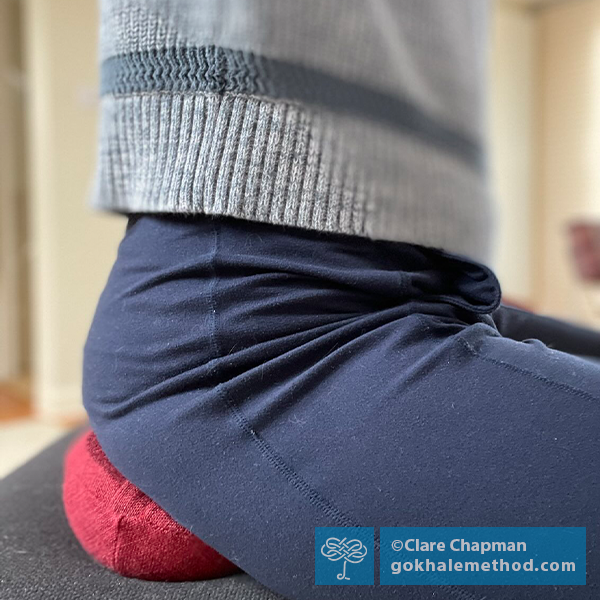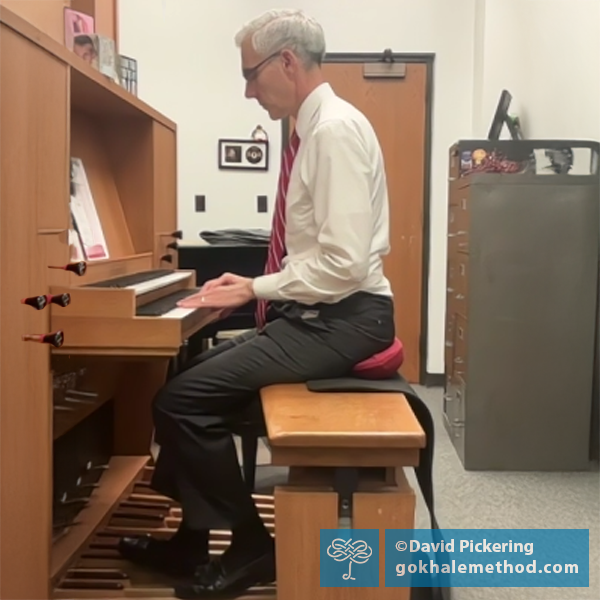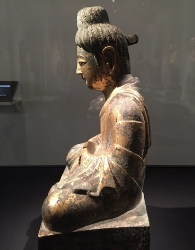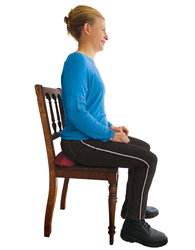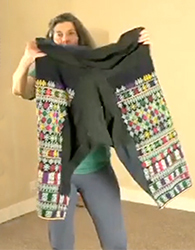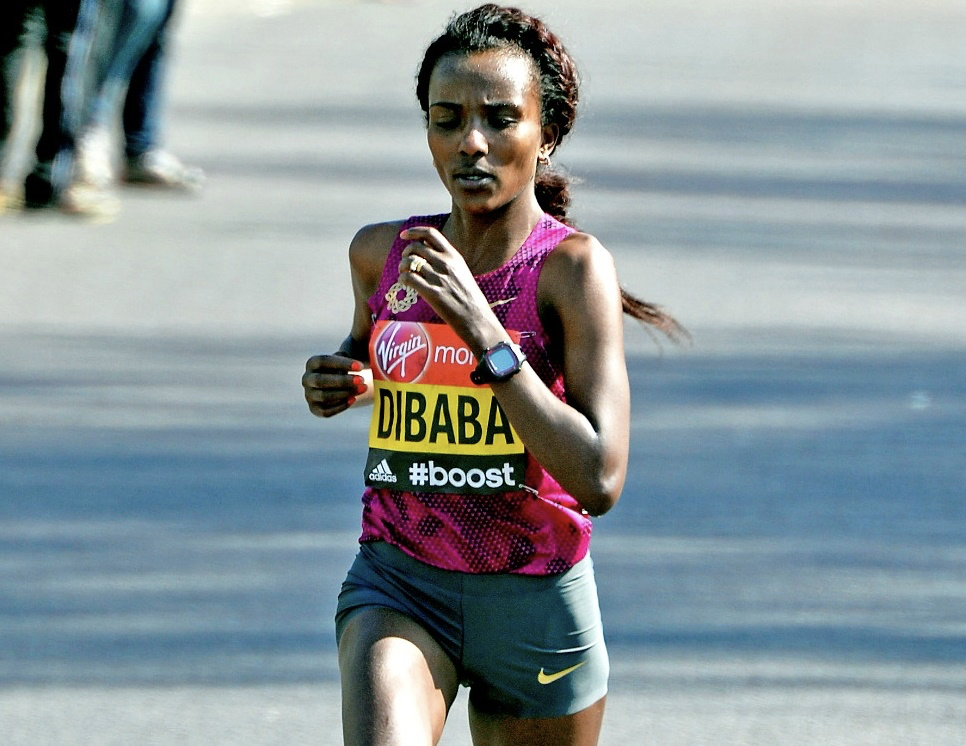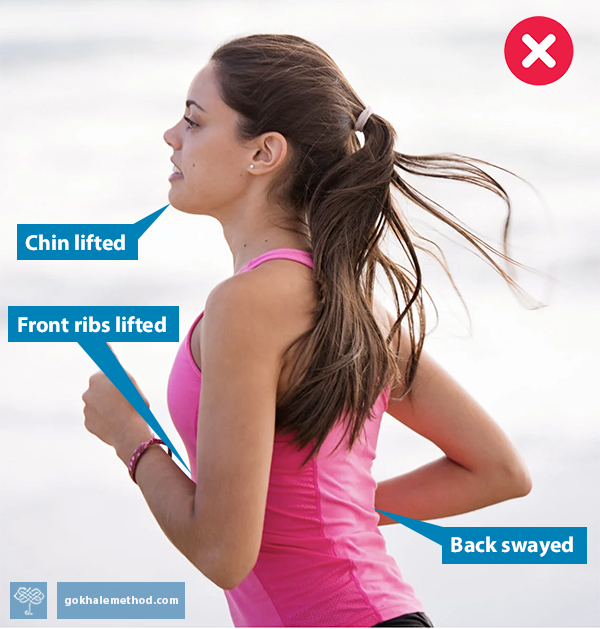Our teachers often field questions about tucking the pelvis for Tai Chi and Qigong. It is frequently perceived that Tai Chi recommends tucking the pelvis as part of a baseline stance, purportedly to facilitate “the Qi to flow unimpeded.” It’s a central tenet in Gokhale Method® philosophy that the baseline pelvic position be anteverted, and that tucking the pelvis is a “wrong turn” Western society took about a century ago (think flapper posture). So students who encounter a seemingly exactly opposite guideline or model in Tai Chi are understandably confused.
Getting Upright Sitting “Just Right”
Some things in life want to be “just right.”. There is a popular fairytale about the importance of this—the story of Goldilocks and the Three Bears. The most well-known version features a young girl with golden hair who wanders into the woods and finds a house with no one home. It belongs to Papa, Mama, and Baby bear. The story goes that Goldilocks
Playing the Organ with No Pain and More Musicality
I came upon the Gokhale Method® very much by chance. Years ago I worked with a pianist named Sheila Page who was trained in a technique which was founded by the American music teacher Dorothy Taubman. Taubman observed people with high levels of playing ability, found out what they did so well, codified it into a method and taught it. At a Taubman workshop I heard of Peter Egoscue, who had devised a therapeutic exercise program; I worked from his book when I hurt in places, and had some improvement with that. Doing further research for pain relief, I then encountered Esther Gokhale’s name. Not too long after, my son and I drove together to attend a one-day Immersion course Esther was teaching in Boulder, Colorado.
The Gokhale® Wedge 2.0
In Spring last year we launched the Gokhale® Wedge. For years, our students have been requesting a convenient, ready-made wedge for upright sitting without a backrest, one that doesn’t require folding blankets and other makeshift (pun intended) measures. The requests also specified an attractive item to enjoy around the home or office, and that it be of durable quality, keeping its shape and good looks with daily use.
Posture Tips for Meditators
It has been over 60 years since Eastern schools of meditation became widely known in the U.S. and Europe, and meditation became widely practiced, with over 14% of Americans having meditated at least once. If we include those practicing mindfulness techniques, using meditation apps, and attending yoga classes with a meditation component, this figure goes far higher.
The effects of sitting in meditation
The potential benefits of meditation are well known, and include a calmer, clearer mind, lower levels of stress, better sleep, improved relationships with others, and better mental health.
From a posture perspective, whether you sit in meditation regularly or are just getting started, you want the experience to be as healthy for your body as it is for your mind.
The Gokhale™ Wedge for Relaxed, Upright Sitting
In this blog post I am excited to introduce a wedge for stacksitting to our students and readers. It’s possible to experience and take pleasure in sitting as you work at your desk, eat at your table, or play an instrument. If this is not the case for you, the Gokhale Wedge could make it so.
Pants, Posture, and a Pain in the Back
As we transition from the winter months into spring, many of us will search in our wardrobe for lighter weight clothing and perhaps some lighter colors. One thing we often overlook when it comes to choosing clothing is how it affects our posture—including whether it risks giving us back pain, or helps to resolve it.
Ronald Katz’s Gokhale (Gō-clay) Method® Success Story
Before I settle in to recount my back pain story, let me fetch my Gokhale Pain-Free™Chair. This is the chair I now use for all my writing, and that’s important, as I am an author of mystery short stories, and spend many hours composing at my desk. Pain-free, I’m now glad to say.
Gliderunning: Part 6: Upper Body
Welcome to the sixth blog post in our series on running. My name is Michelle Ball, and I am a Gokhale Method® teacher living in Tasmania. I am also a lifelong runner and am passionate about sharing the benefits of healthy posture with the running community, be that beginners, seasoned runners, or anyone in between. Even if you walk rather than run, the posture principles outlined in this post can still help you to enjoy an active and pain-free body well into old age.
Running with a well-positioned upper body
In this post we will consider the upper body. Runners are inclined to pay far less attention to the upper half of the body than the lower half, as they focus on gait pattern, cadence, footwork, and propulsion. This is hardly surprising, but the lower body, while super-busy, really is just half the story.
Healthy posture in the upper body brings the following benefits:
Protected spinal structures
Improved biomechanics
Unimpeded flow and momentum
Support that makes the body feel lighter
Athletic appearance
Gliderunning: Part 5: Anteverted Pelvis
Welcome to the fifth blog post in our series on running. My name is Michelle Ball, and I am a Gokhale Method® teacher living in Tasmania. I am also a lifelong runner and am passionate about sharing the benefits of healthy posture with the running community, be that beginners, seasoned runners, or anyone in between. Even if you don’t run, but do want an active and pain-free body well into old age, this blog post is for you!
What is an anteverted pelvis?
Pelvis refers to the bony pelvis, and means basin, or bowl, in Latin. Anteverted means tipped, turned, or inclined forward, from the Latin ante to go before or in front, and vertere to turn. So we are referring to a pelvis that tips forward.


